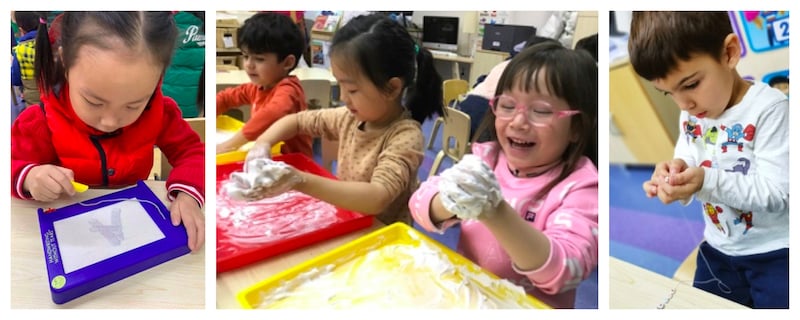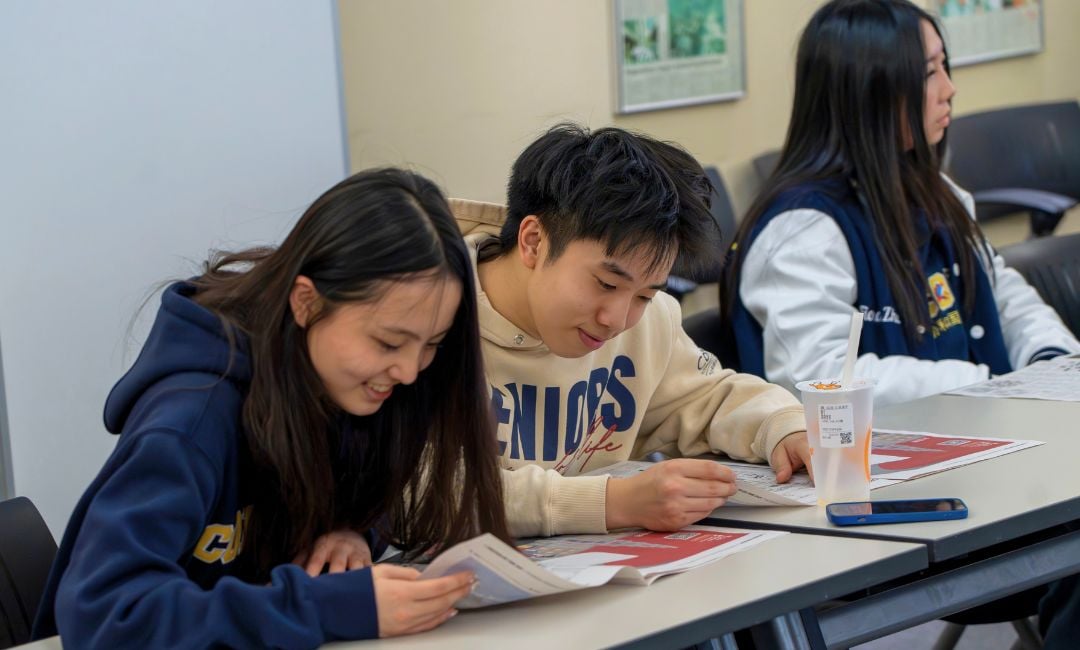Providing multi-sensory, hands-on activities is key to building language and literacy skills in the early years. Reading alphabet books, singing the alphabet song and even letting young children play with computer keyboards will ensure children get plenty of practice identifying letters to prepare them for writing and de-coding later on.
At Concordia, early literacy activities are fun, engaging and build a strong foundation for higher academic years to come. Play is hard work and to the untrained eye, it can look like learning is not taking place.
Here is a snapshot of pre-literacy learning in prekindergarten on a given day.
The students combine letter learning with sensory play when they experience letter writing in a tray filled with shaving cream. Not only are the children extremely excited to learn to write the letters of the alphabet, they enjoy the whole sensory experience! They use their senses to feel the soft and fluffy texture, smell the clean scent, and observe how the substance changes over time while forming letters in the tray!
Our young learners also make bracelets and necklaces out of alphabet beads for themselves and also for those they love! As they string the beads, they are strengthening their fine motor skills to build muscles required for writing. They also sing the ABC song to help them put the letters in order. Who needs worksheets when there are so many more fun ways to learn letters in the alphabet?

Early literacy is comprised of print concepts, phonological awareness as well as letter and word recognition. Since our youngest learners are not ready to actually formally read entire books on their own, the focus is exposure to books and early “pre-literacy” concepts, including:
- Understanding that words are read from left to right and top to bottom.
- Orienting books to be right-side up and beginning to read on the front cover.
- Pointing to words to demonstrate understanding that the print carries meaning.
- Recognizing and producing rhyming words.
- Recognizing that words are separate units that make up a sentence.
- Blending and segmenting syllables and sounds to form words.
- Identifying the first and last sounds in spoken words.
- Recognizing and naming upper and lower case letters, especially letters in their first name.
- Recognizing the sounds associated with letters.
Research shows that it is important to lay a strong foundation of language and literacy skills. Learning through play is an age-appropriate instructional style that can help young children master skills that will help them thrive in all academic areas.




